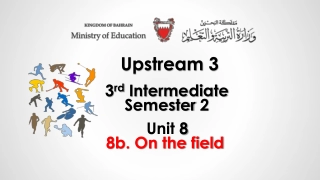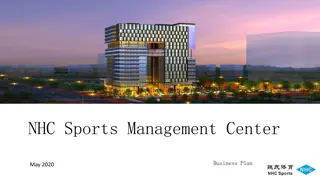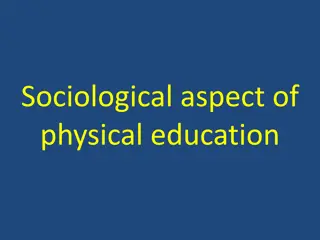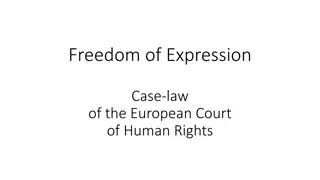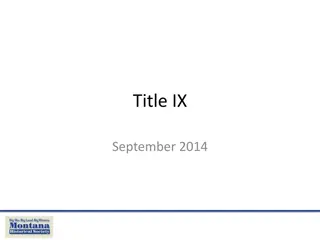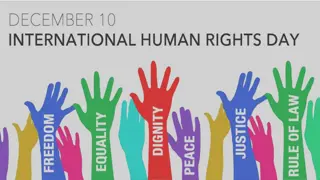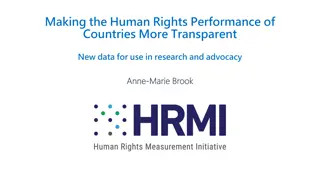Law, Strategy, and Human Rights in Global Sports Industry
The content delves into the legal aspects and strategic considerations within the globalized sports industry with a focus on monopolization, abuse of dominant position, and human rights constraints on sporting entities. It discusses the implications of attaining monopoly power, abuse by National Governing Bodies (NGBs), and the influence of human rights claims on sporting decisions. The text highlights the complexities associated with balancing commercial activities of NGBs with regulatory obligations and the challenges in aligning sporting decisions with human rights considerations.
Download Presentation

Please find below an Image/Link to download the presentation.
The content on the website is provided AS IS for your information and personal use only. It may not be sold, licensed, or shared on other websites without obtaining consent from the author. Download presentation by click this link. If you encounter any issues during the download, it is possible that the publisher has removed the file from their server.
E N D
Presentation Transcript
SPORTS LAW: Law and Strategy in the Globalized Sports Industry INTERNATIONAL HUMAN RIGHTS
Review & Takeaway Sherman 2 bars monopolization Attainment of monopoly power: no reasonable substitutes Wilful maintenance or acquisition of power, in contrast with superior skill, foresight, and industry EU Art 102 bars abuse of dominant position Improper attainment or maintenance of power Use of power to gain unfair advantage Assumes competition is a good thing and monopoly is not Sports monopolization Illegal expansion when not simply meeting new demand Hoarding of players Predatory spending Organizing all clubs to conspire to align with dominant league
Review & Takeaway II Monopolization/Abuse and NGBs Regulatory power gives NGBs dominance Antitrust issues arise when conflict alleged between role as regulator and NGB commercial activities Formula One divested from regulatory board to separate commercial company Greek motorcycle NGB required to approve competitions based on objective standards Indian cricket authority found to improperly favor own competition Courts have ruled for players in sanctioning cases, but real competition issue is predation: NGBs willing to harm own national teams in order to maintain their unrivaled power [CONTINUE WITH SLIDE 19]
Human Rights as an External Constraint on Sporting Entities Sporting entities must resolve an accommodate many competing interests Those aggrieved often have no marketplace or other alternatives but to accept decision of sporting bodies Human Rights claim is an argument for a privileged claim Internal argument to sporting entity PR concern Risk of statutory intervention Legal challenge based on applicable law
What are human rights that constrain sporting entities? Most of what we consider human rights are claims against governments, that are not applicable to sporting entities Sagen v Vancouver Organizing Committee [2009]: BC trial judges rejects claim that IOC s decision to have men s but not women s ski jumping violated sex equality provisions of Canadian Charter This is private decision of IOC and VANOC, not government decision Many claims base on human rights documents that are not legally enforceable, but may be strategically persuasive Could be based on statutory claims
Principal influence: interpretation of broad clauses in internal documents Soft law : courts interpret general principles to promote human rights, absent clear language in documents to the contrary Chase: common law equity won t enforce peonage Messersmith: (see next time) literal language in contract construed to avoid a perpetual option contract Squizzato v FINA: general concept of proportionality applies to WADA Code Court of Arbitration for Sport (CAS) follows Swiss law, which also requires proportionality Proportionality review Examine entity s objectives Analyze means chosen to achieve objectives Conclude whether means are proportionate to end
Semenya: Procedural setting IAAF rules excludes Mokgadi Caster Semenya (MCS) from further participation in specific Athletics (track) events unless she takes drugs to lower testosterone MCS and Athletics South Africa challenge rule before CAS IAAF rules bar athletes from bringing legal claims in court CAS resolves all legal claims they can bring
Semenya: Sources of Law Substantive claims Rules are arbitrary Rules are discriminatory and disproportionate What are the sources of law that support the claim that rules that are arbitrary, or discrimination and disproportionate, are unlawful? What does the panel mean [s205] when it demurs in determining whether the regulations are contrary to the domestic law of different national jurisdictions?
Semenya: IAAF Objectives Reg 1.1 (a)(i): avoid discouraging athletes to invest in excellence by having unfair competition conditions that deny athletes a fair opportunity to succeed Reg 1.1 (c): sport should be as inclusive as possible, with conditions only to the extent necessary to ensure fair and meaningful competition Reg 1.1(e): essential to respect and preserve dignity and privacy of athletes with differences in sex development (DSD)
Semenya: IAAFs chosen means to achieve objectives Separate competitions based on age Separate competitions for sex: a protected class of female athletes Otherwise, women would be denied the right to compete and succeed IAAF notes can t just rely on national law to categorize sex Strict confidentiality rules Specific eligibility requirements for certain international events Must reduce testosterone level to below 5nmol/L8 for six months Doesn t apply elsewhere, except re world records
Key reasoning of Semenya decision CAS majority acknowledges problem that two categories works to exclude men from competing against women, but doesn t work for those not w/i discrete binary categories [s195] Tribunal accepts collision of conundrums: incompatible competing rights What are the conflicting rights? Note IAAF characterizes dispute as between women athletes and biologically male athletes with female gender identities [s196] Key conclusion is that ok to exclude intersex athletes if rational and fair
Chand prior decision Separate male and female categories are appropriate and justified Categories must be based on objective criteria Exclusion only if necessary to avoid subverting the basis for having a female category and a level playing field IAAF must prove that performance advantage was of a comparable significance, if not identical magnitude, to that enjoyed by male athletes and advantage caused by testosterone
Semenya holding CAS holds that IAAF regulation is unlawful if it constitutes discrimination, as that concept is understood generally CAS holds that IAAF regulation is unlawful discrimination if: It constitutes differential treatment on the basis of sex or innate biological characteristics Is not necessary, reasonable, and proportionate CAS holds that the regulation differentially treats DSD athletes on the basis of sex CAS rejects challenge based on argument that IAAF s procedures were inconsistent with criteria for sound regulatory policy making CAS holds that regulation is necessary to protect female athletes without DSD from unfair competition from female athletes with DSD CAS holds that regulation is proportionate, having regard for side effects
Conclusion of Semenya panel IAAF argues that DSD women with 5-ARD condition are biologically indistinguishable from males without DSD Panel rejects label of biological males in favor of focus on whether magnitude of advantage is capable of subverting fair competition [s201] Rejects claim of inadmissibility of scientific studies based on examination of blood provided for doping purposes Finds preponderance of evidence supports claims that DSD athletes have high levels of testosterone in male range, and this results in significantly enhanced sports performance [s203] Emphasizes huge disproportion of female athletes with 5-ARD among elite athletes Did panel find IAAF met burden of proof required by Chand?
Further questions Key purpose [s.205] to protect individuals from having to compete against other individuals who possess certain physical traits that create such a significant performance advantage that fair competition between the two groups is not possible. If this really is IAAF s purpose, then why not offer separate competitions re height/weight, as in wrestling or boxing? Why is it unfair for Francine Nyonsaba to have to run the 800m against Caster Semenya, but ok to deprive women who are under 5 5 to compete in the hurdles? Are there different considerations involved in less elite competitions, such as college or high school athletics?


